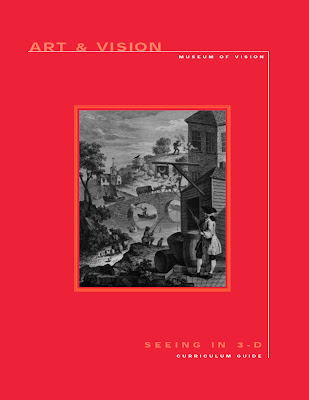Science fairs are a great way for young students to research a topic of interest and gain valuable knowledge in science through the hands-on experience of research and experiments. Our society relies more on science every day, and science fairs give students the opportunity to become more knowledgeable about how the world around them works. To help students brainstorm, research, and perform fun scientific experiments this spring, the Museum of Vision, a public service program of the Foundation of the American Academy of Ophthalmology, is providing free curriculum guides to help illuminate the exciting science of vision.
The Museum of Vision provides educational materials for physicians, teachers, and parents interested in teaching children about the eye, vision, and ophthalmology, making education affordable and fun. The Museum’s entire range of curriculum offerings aims to teach children about the fascinating and spectacular science of vision.
One of their popular guides, Art and Vision: Seeing in 3D, explores the concepts of vision and special visual techniques that help to create the illusion of depth. It includes sections on size scaling, overlapping, atmospheric perspective, and linear perspective. The first chapter of the guide teaches children about the eye’s anatomy and how the human visual system works to help us see in 3D. This guide also includes activities for youngsters and provides all appropriate handouts. It is most suitable for children ages 11 and up, and is offered free of charge.

Also offered are teacher workbooks, created by the Museum to focus on the human eye, the differences between human and animal vision, how the brain processes images like optical illusions and 3D, and the importance on keeping eyes healthy. These and all of the curriculum guides, Healthy Eyes, Healthy Body, Eye Openers, Animal Eyes, and Art and Vision are filled with discussion points and fun interactive activities to keep children’s interest and build knowledge.
Each of these guides can also be downloaded for free on the museum’s website at www.museumofvision.org/education.
